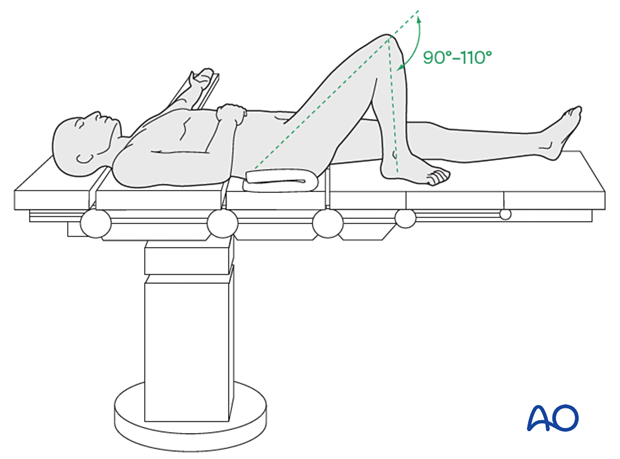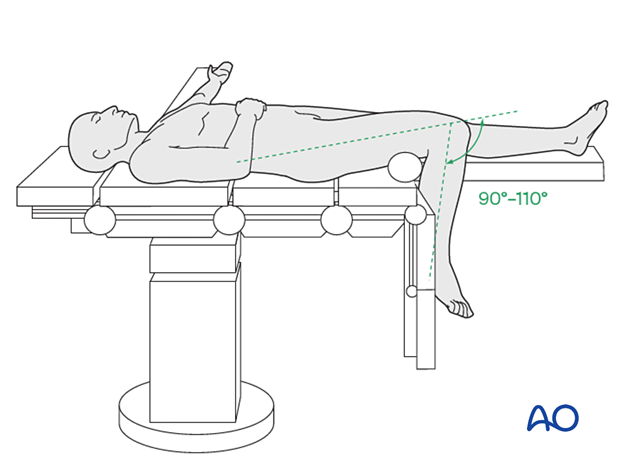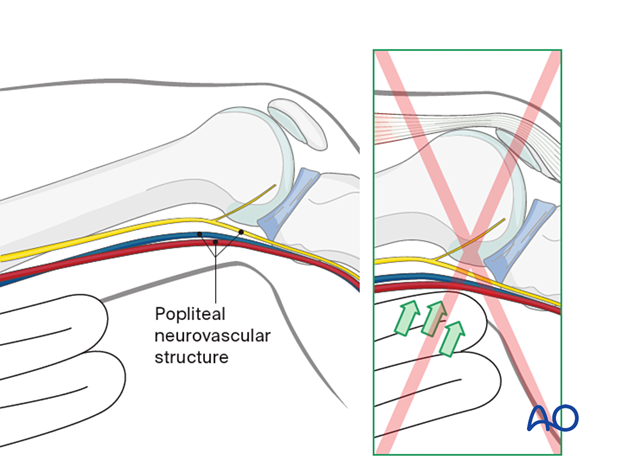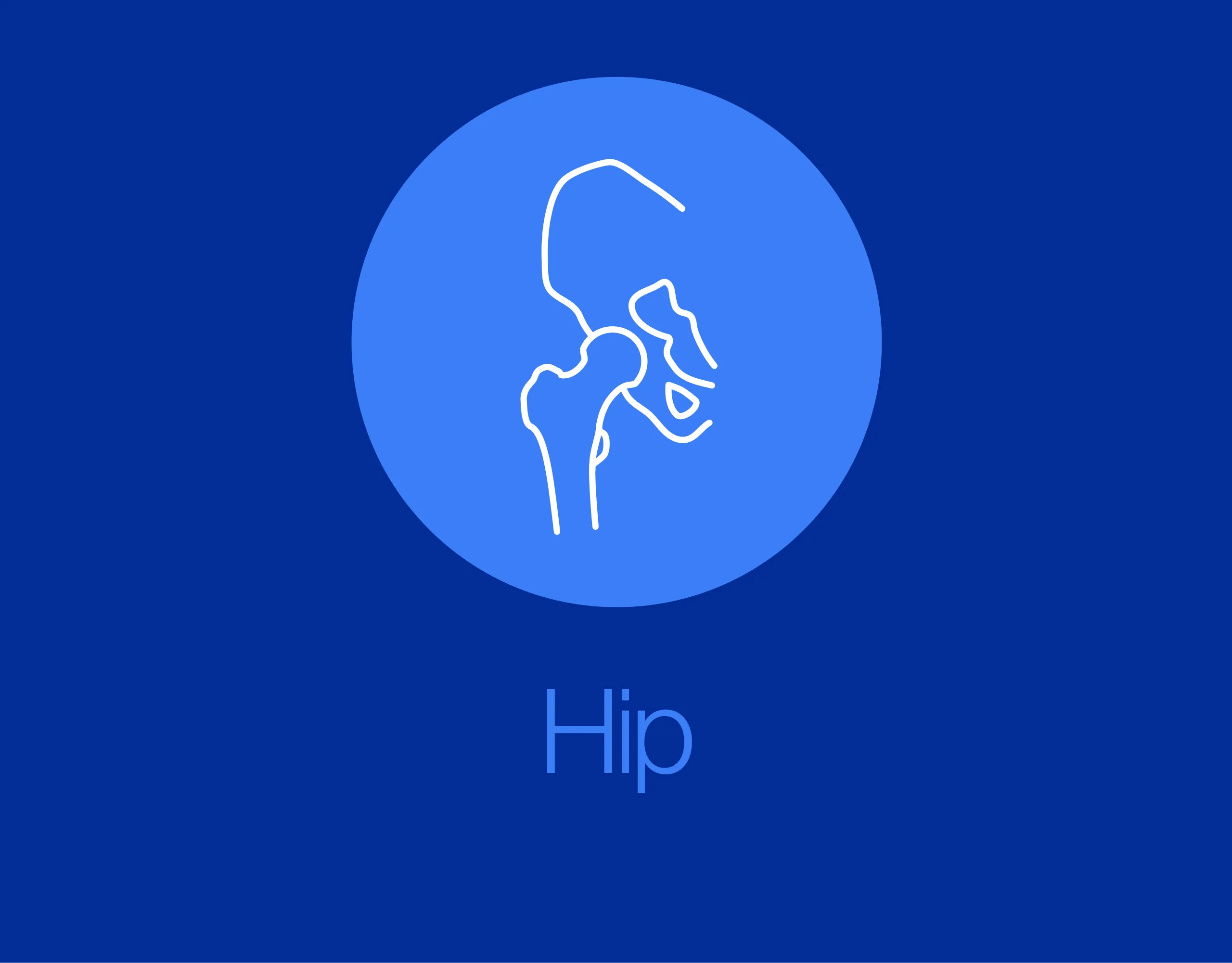Flexed knee position for intramedullary nailing
1. Positioning
The patient is placed supine.
The knee will need to be flexed up to 90–110° for entry site access, and some kind of support is usually necessary so the tibia remains aligned and the foot can rest on something while the nail is driven home.
A small bolster may be placed underneath the buttocks of the injured leg. Slightly tilting the pelvis helps neutralize the tendency for external rotation of the limb.

2. Position of the knee
It must be possible to flex the knee by up to 90–110°.
This can be achieved by placing a foam triangle under the knee.

3. Alternative position
As an alternative, the operating table can be flexed. Place a bolster under the thigh to allow for up to 110° of knee flexion.


4. C-arm positioning
C-arm positioning must allow for perpendicular (AP and lateral) images of the knee, entire tibia, and ankle. The C-arm should be placed on the non-injured side of the patient.













